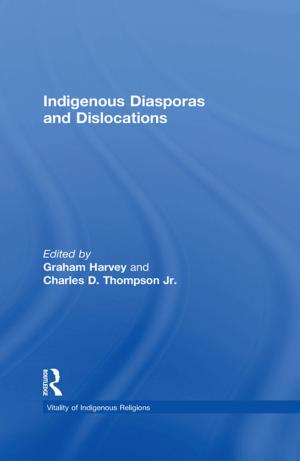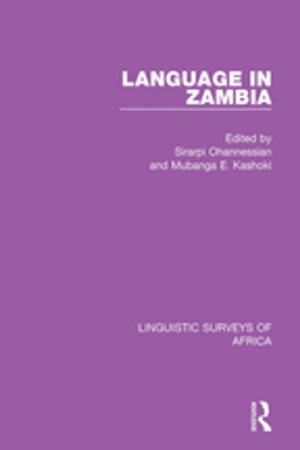Representing Mixed Race in Jamaica and England from the Abolition Era to the Present
Fiction & Literature, Literary Theory & Criticism, Feminist Criticism| Author: | S. Salih | ISBN: | 9781136913211 |
| Publisher: | Taylor and Francis | Publication: | September 30, 2010 |
| Imprint: | Routledge | Language: | English |
| Author: | S. Salih |
| ISBN: | 9781136913211 |
| Publisher: | Taylor and Francis |
| Publication: | September 30, 2010 |
| Imprint: | Routledge |
| Language: | English |
This study considers cultural representations of "brown" people in Jamaica and England alongside the determinations of race by statute from the Abolition era onwards. Through close readings of contemporary fictions and "histories," Salih probes the extent to which colonial ideologies may have been underpinned by what might be called subject-constituting statutes, along with the potential for force and violence which necessarily undergird the law. The author explores the role legal and non-legal discourse plays in disciplining the brown body in pre- and post-Abolition colonial contexts, as well as how are other bodies and identities – e.g. black, white are discursively disciplined. Salih examines whether or not it’s possible to say that non-legal texts such as prose fictions are engaged in this kind of discursive disciplining, and more broadly, looks at what contemporary formulations of "mixed" identity owe to these legal or non-legal discursive formations. This study demonstrates the striking connections between historical and contemporary discourses of race and brownness and argues for a shift in the ways we think about, represent and discuss "mixed race" people.
This study considers cultural representations of "brown" people in Jamaica and England alongside the determinations of race by statute from the Abolition era onwards. Through close readings of contemporary fictions and "histories," Salih probes the extent to which colonial ideologies may have been underpinned by what might be called subject-constituting statutes, along with the potential for force and violence which necessarily undergird the law. The author explores the role legal and non-legal discourse plays in disciplining the brown body in pre- and post-Abolition colonial contexts, as well as how are other bodies and identities – e.g. black, white are discursively disciplined. Salih examines whether or not it’s possible to say that non-legal texts such as prose fictions are engaged in this kind of discursive disciplining, and more broadly, looks at what contemporary formulations of "mixed" identity owe to these legal or non-legal discursive formations. This study demonstrates the striking connections between historical and contemporary discourses of race and brownness and argues for a shift in the ways we think about, represent and discuss "mixed race" people.















